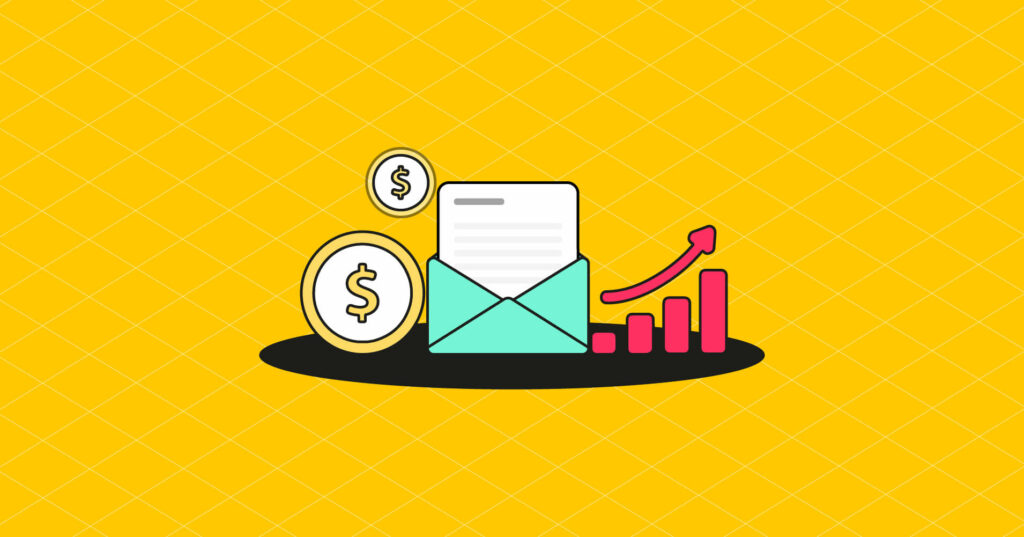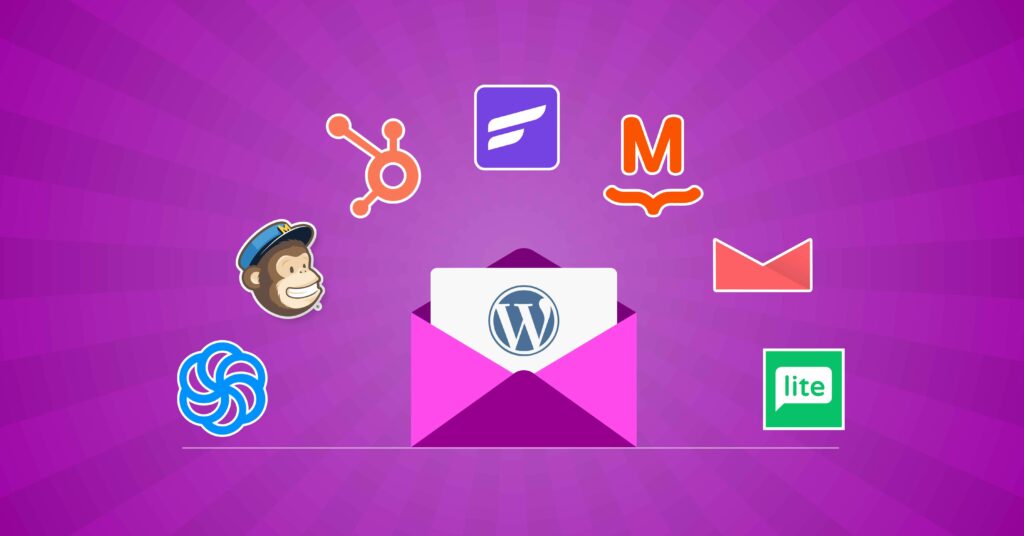
Every email marketer understands the value of email marketing, but most struggle to find the right frequency of sending emails. Send too many emails and the unsubscribe rate increases. Send too few emails, and subscribers will forget about you.
So, if you’re asking how often you should email to preserve your subscribers’ interest without annoying them, you’re in the right place. In this piece, we’ll explore email frequency best practices.
Hopefully, after reading this article, you’ll be able to figure out exactly how many emails you should send your subscribers and how often!
But before we go into the email frequency best practices, let’s find out how email frequency can impact your overall ROI.
How does the frequency of your emails impact your ROI?
Keep in mind that when we say email frequency best practices, we solely mean the ideal approach! Anything above or below can hurt your email marketing campaign, company reputation, and many other things.

Although both under and over-emailing have different impacts, the outcome is the same: lower ROI! Let’s look at how these can hamper your overall effort.
Consequences of under-emailing
Determining the ideal number of emails to send is very tough. In search of making it as accurate as possible, most email marketers make a common mistake. They often lower the number of emails so much that it affects them negatively.
Under-emailing or sending less than enough emails can –
- Reduce the customer’s interest: Customers expect email from you on a regular interval. If you fail to provide relevant content regularly, your subscribers might lose interest in your brand.
- Lessen the inbox presence: If your email frequency gets too low, the subscribers may not recognize your company or might forget why they subscribe to your campaign in the first place.
- Affect the sender reputation: Spam filters often recognize infrequent emails from a particular email address. If you send emails infrequently, it might hamper your sender reputation and increase the chances of your emails going to spam.
- Unhelpful data for list cleaning: Email list cleaning is vital for maintaining the effectiveness of your email list. If you aren’t consistently sending emails, you won’t be able to identify abandoned email addresses, and hence, it’ll be harder to remove idle email addresses.
- Stall business growth: Under-emailing would lead potential customers to move away from your brand and not be informed about your products. Less customer means less business!
Consequences of over-emailing
More doesn’t always equal better. In most cases, more has more negative consequences than less. Excessive emailing can permanently harm your email reputation and land you in spam traps.
Let’s look at some of the consequences of excessive emailing.
- Reduce engagement: Excessive emailing may irritate your subscribers. Don’t forget that they’re also receiving emails from other people. If you appear too frequently in their inboxes, they’ll begin to ignore you at some point, severely reducing your engagement rate.
- Affect sales and revenue: As your subscribers ignore you, your company’s revenue graph will begin to fall. Because they keep the majority of your emails unopened, the server will begin to mark you as undesired, and your emails will go to spam. This ultimately results in you missing out on revenue-generating opportunities.
- Increase unsubscriptions: Do you know what the worst-case scenario is? Your recipients won’t just ignore you. Rather, they will eventually unsubscribe from your email list if they get annoyed.
- Increase spam rate: Those who voluntarily subscribe to your email list can also voluntarily leave too. If you’re irritating your subscribers with too many emails, they may even mark your emails spam and cause permanent damage to your inbox placement rate.
Key metrics for determining email frequency
The best way to understand whether your emails are working or not is to look at your recipient’s email activities. Many such email marketing metrics exist in email marketing, including unsubscribe, bounce, spam, etc.
Here’s a study that shows how most marketers evaluate an email campaign’s efficiency:
However, when it comes to evaluating your email campaign’s performance to identify an ideal email frequency, you can confidently rely on the following two metrics:
Open rate
Although open rates have died due to Apple’s mail privacy protection, it is still a fantastic indicator if you’re using a system that can understand the difference between machine opens and human opens.
The open rate can help you understand when most recipients open your emails. As a result, it can be a good metric to determine if you’re sending the right amount of emails or at the right time.
Click-through rate(CTR)
While opens indicate whether your emails are getting read or not, CTR indicates how effective the email is. Yes, it’s the ultimate metric for determining the right email frequency. By examining click-through rates, you can easily understand when your emails receive the most clicks.
More clicks usually mean higher conversion rates. If your email is earning you a good CTR, congratulations, you’re sending the right number of emails! But if your emails aren’t getting the proper attention then it’s a red signal.
Jump into this guide and improve your email click-through rate for increased conversion
10 email frequency best practices to follow
While open rates and CTR can indicate whether you’re sending emails at the ideal frequency, this can vary depending on the industry you’re in. However, no matter which industry you’re in, adhering to a few email frequency best practices can boost your overall email marketing strategy.
In order to achieve your ideal email frequency, you can follow the tips we’re sharing below:
Understand your audience
A thorough understanding of your target audience will help you stay ahead of the competition. Therefore, you need to keep your audience at the core of your email marketing campaigns.
Investigate your recipients’ actions, determine when they favor opening their inboxes and try to identify the characteristics of your recipients. Design your email marketing strategy around your audience’s needs and provide answers they want to hear.
If they’re still not interacting with your emails, feel free to discuss their issue, offer a solution, and go with their interests.
Explain your intention
Instead of letting your audience get lost in a desert of annoyance, directly inform them of the service you’re providing and the number of emails you’ll send each week.
We advise that you let each new subscriber know how frequently you’ll send emails. They’ll be aware of your policy from the start and won’t be exhausted later. Allow them to choose the number and frequency of emails they want to receive. We assure you. this will improve your company’s credibility and influence your audience positively!
Segment your contact
It’s natural for your email list to contain a variety of people of varying ages and genders, and not all of them are undergoing the same problem. This is why you must prioritize segmenting if you want to send bulk emails without spamming!
The needs of a young person and an older adult may differ significantly. So be mindful of what you’re offering and always show respect to market segmentation. Segment your contacts based on their needs, age, gender, etc., and try to provide something that they truly desire.
Use a marketing automation tool
Because of the availability of various email marketing tools, email marketing is no longer as difficult as it was in the previous decade. They’re the blessing that all email marketers should freely embrace.
No matter how committed you are to creating an email list, manually segmenting recipients, and sending emails frequently, you will eventually get tired at some point. But what would be the effects?
Well, it’ll significantly hamper your consistency and slow your marketing process. That’s why we always encourage our audience to use an efficient marketing automation tool.
Email automation tool will assist you in –
- Gathering leads from various sources
- Segmenting your subscribers into different groups
- Sequencing your emails exactly how you want
- Automating your entire email-sending process using the right frequency
- Obtaining the necessary data to run a successful campaign
- A/B testing your emailing procedure
FluentCRM can be your go-to option to collect leads, segment them using tags/lists, automate your conversation with powerful funnels, and build and grow your business with high conversion & stable customer management.
Grow with Affordable Marketing Automation Inside Your WordPress Dashboard!

Allow the recipients to decide
Do you know what the best solution for every problem is? —Discussion!
Pass the ball to your recipient’s court and let them decide what they want. Simply ask your subscribers to select the email frequency they are comfortable with, and you’ll gain their trust!

If you’re using FluentCRM, you can dynamically tag the audience based on their choice and send emails based on their chosen frequency.

Be consistent
Email marketers frequently overlook the significance of consistency. Email marketing does not require much effort at once, however, what it requires is a consistent effort.
Consistent email sending is critical for the following reasons:
- It won’t let your subscribers forget about you
- It’ll assist you in keeping your email list clean by allowing you to remove inactive users at regular intervals
- Consistent communication will keep you at the top of your subscribers’ minds
Recognize the differences in B2C and B2B email frequency
Remember that the best practices for email frequency can change depending on the type of recipients you have. Our email recipients are roughly divided into two groups: businesses and customers. And you must use two distinct approaches when sending emails to these two distinct groups.
Try to distinguish between B2B and B2C emails at first. When sending B2B emails, try to act professionally. We recommend that you send B2B emails no more than twice a month.
Examine industry averages
Don’t be disheartened by your clients’ responses compared to other industries. Email metrics such as open rate, click rate, and click-through rate can vary depending on the industry. And maybe the responses you’re getting are ideal for the industry in which you work.
Instead of comparing your niche to others, try to understand your industry. Determine the optimal number and adapt your email sending best practices accordingly.
A/B test email frequency
Just as we mentioned, there’s o exact answer to what an ideal email frequency is. Thus, it’s best to find the ideal email frequency yourself. Remember that everyone has unique email inbox opening habits, and it’s natural for your subscribers to differ.
So, to determine the best email frequency practices, we recommend that you A/B test your frequency. Run multiple email campaigns at various frequencies, compare the metrics of these email campaigns, and see which works best for your recipients!
Analyze the metrics correctly
All of the above-mentioned email frequency practices will provide you with the required information. However, they won’t provide you with the exact numbers. You and only you, can determine your best frequency by examining data.
Develop an email frequency strategy that is ideal for you by paying close attention to the metrics. Any misunderstanding could seriously mislead you, rendering your entire email-sending effort useless.
What is the best time to send an email in 2024?
This is a tricky question to answer. Frankly speaking, every email marketer is desperately searching for this; however, there’s no straightforward answer.
Your prime goal is to send relevant emails at a time when it’s convenient for your subscribers. For that, you can take various factors into account to get this right. The following aspects must be considered if you want to understand the ideal time for sending your emails
- Your niche
- Time zone of your readers
- Your subscribers’ email usage patterns
- Frequency of Email
Best day to send an email
If used correctly, every day is a good day to send emails. Your strategy, content, and relations with your clients are the things that matter. While there’s no straightforward answer to which are the best days to send an email, we can certainly follow patterns.
Take a look at the graph below.
What do you see?
Important metrics like open rate, click-through rate, and bounce rate show a fairly flat trend. At least during the weekday, there aren’t any significant changes.
However, the graph also shows that people are most active on Fridays and relatively inactive on weekends. Therefore, we advise that you send emails on Fridays and try to avoid sending them on Saturdays and Sundays.
Best time to send an email
There’s no point in sending an email when all your users are busy working. Just as it’s important to choose the right day of the week to send an email, it’s equally important to choose the right time of the day.
According to statistics, most email users are active during the morning. Email users are most active between the hours of 9 a.m. and 3 p.m., so you’ll have a better chance of getting a response then!
Try sending emails between 9 a.m. and 3 p.m. More specifically, we recommend that you target their lunch breaks because this is when they are most likely to check their emails!
How many emails should you send per month?
As previously stated, the frequency with which you should send emails to your customers is determined by several factors. Furthermore, each marketer has their own idea and marketing technique for connecting with their customers. As a result, making an exact call will be unfair.
Source: GetResponse
We can only recommend better practices based on statistics. If you look closely at the image above, you can conclude: fewer is better! We recommend keeping your email frequency as low as possible. It’s best to send 1-3 emails per month, but don’t go over 4.
What else should you remember?
Send at least one email monthly, be consistent, and don’t be the once-in-a-while visitor!
Final words
Our quest for email frequency best practices has ended here! We hope you enjoyed the ride and found our article informative.
Oh, well, let us just give you some friendly advice before you leave!
There are no shortcuts in email marketing. Adhere strictly to the fundamentals, follow the procedure, determine your email frequency best practices, and sit at the top.
Enjoy your email marketing, and don’t forget to leave your thoughts in the comments section.\
Cheers!









Leave a Reply